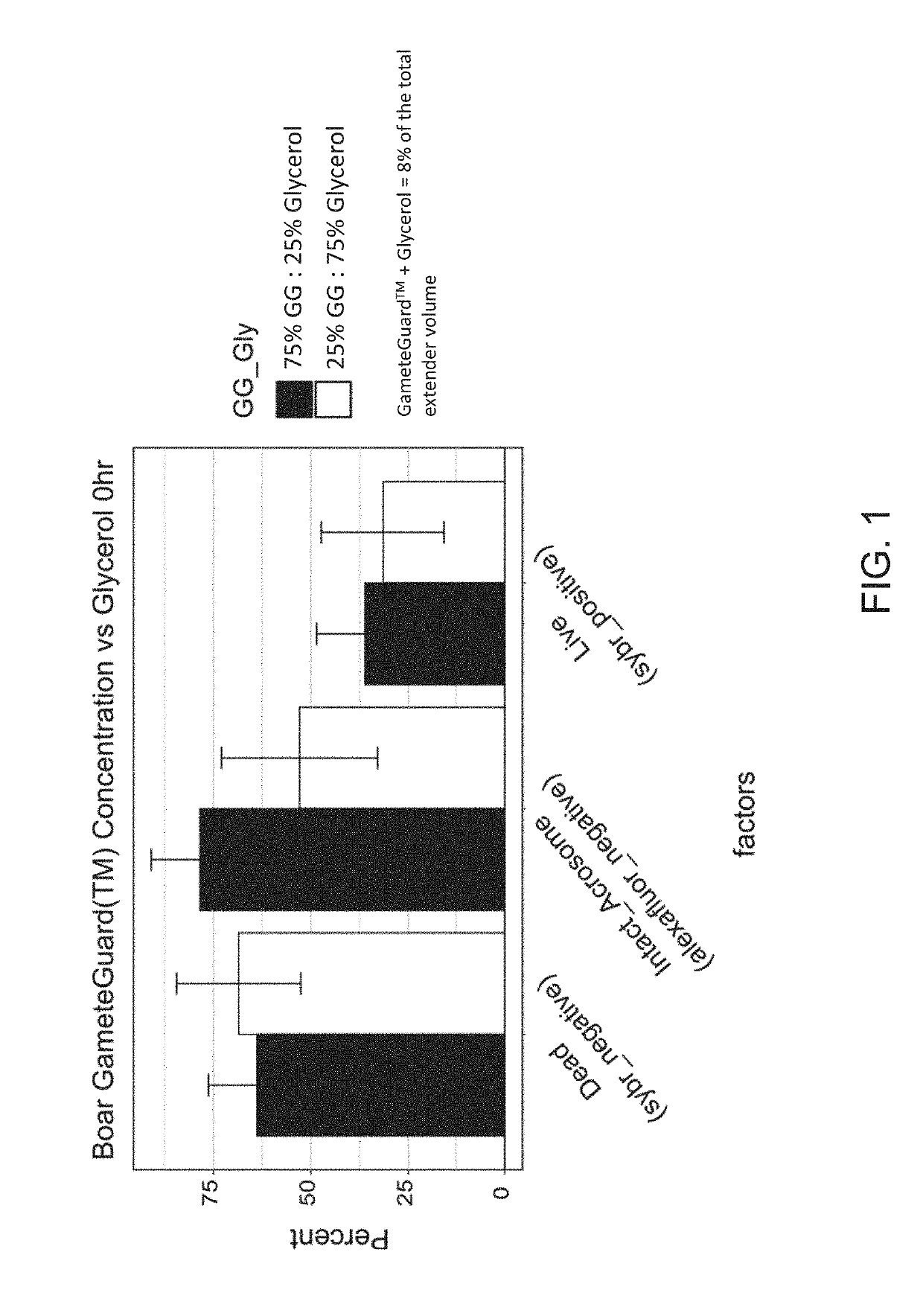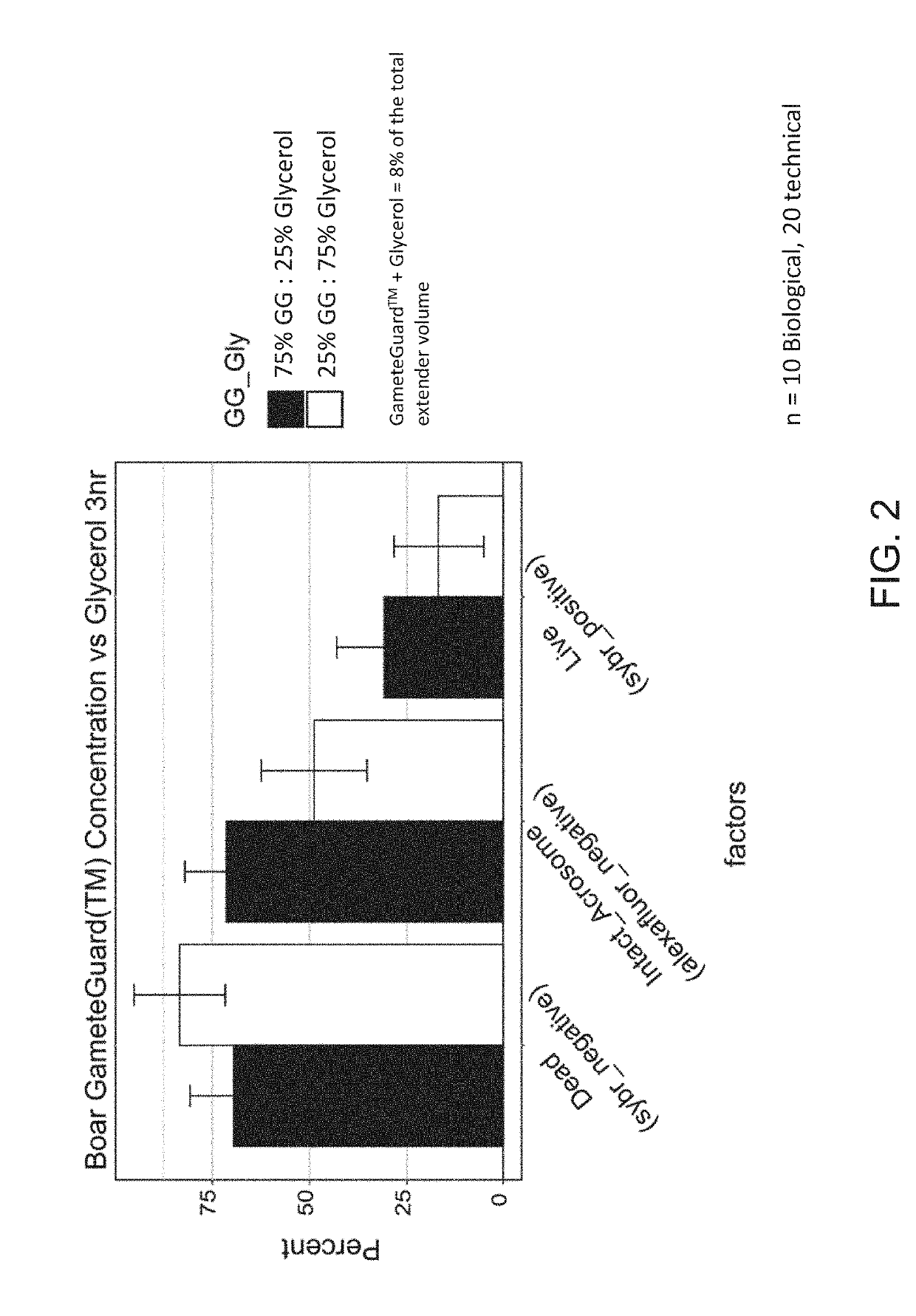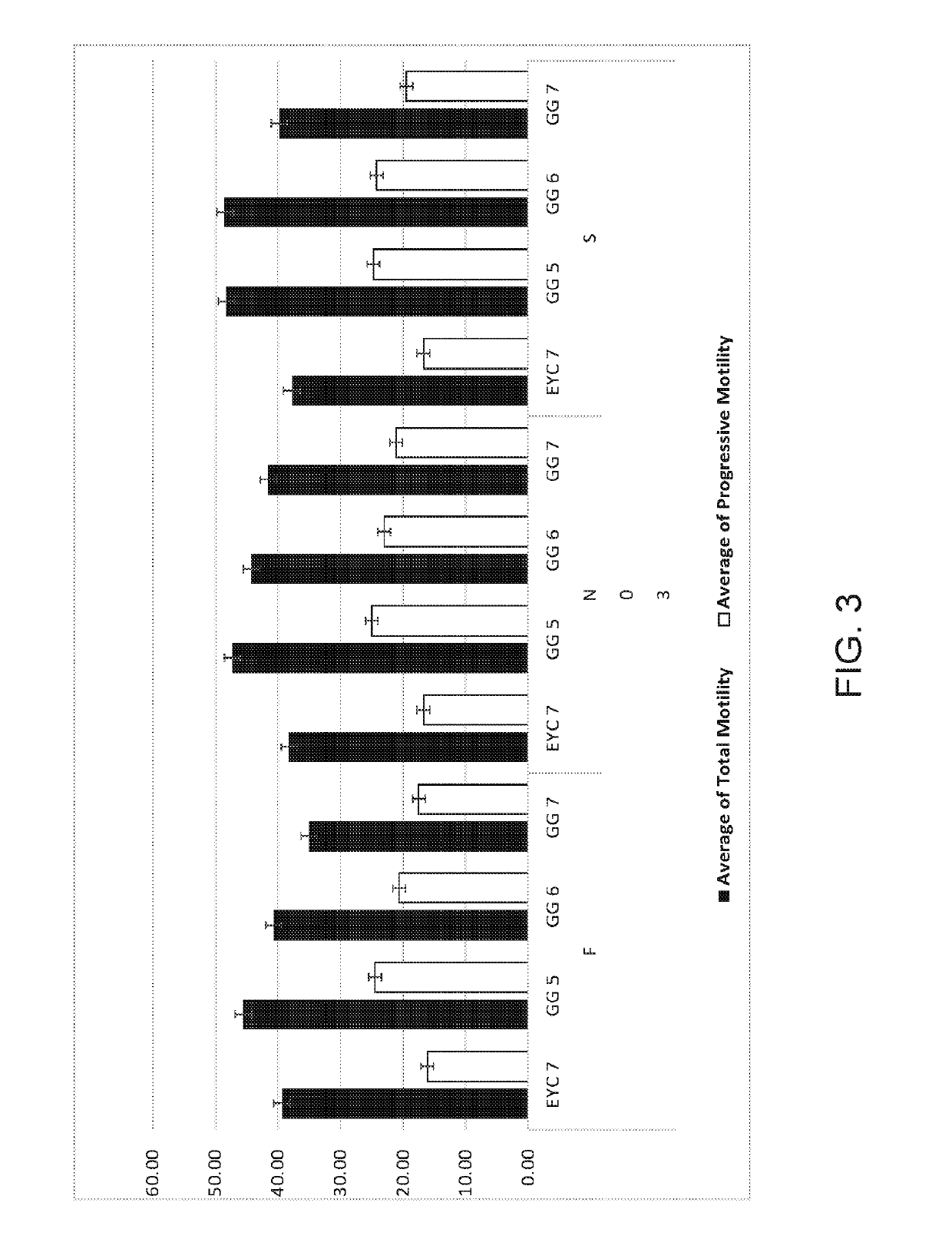Systems and Methods For Natural Cryoprotectants For Preservation Of Cells
a cryoprotectant and cell technology, applied in the field of cryoprotectant for cell preservation, can solve the problems of oxidative damage to dna and organelles, changes in the lipid bilayer, and the inability to cryoprotect cells, so as to reduce post-thaw survival and reduce motility
- Summary
- Abstract
- Description
- Claims
- Application Information
AI Technical Summary
Benefits of technology
Problems solved by technology
Method used
Image
Examples
example 1
m Study
[0054]In one experiment, a certain percentage of the total cryoprotectant in the extender media, in this case glycerol, was replaced with sea buckthorn oil. Glycerol comprised either about 25% or about 75% of the total concentration of cryoprotectant. The total concentration of cryoprotectant was about 2% final (v / v), and the percentage of Sea buckthorn was about 6% in treatment A1 or the opposite for treatment A2 in USDA Extender (prepared by combining 88 g / l lactose, 20% (v / v) hen's egg yolk 1.5% equex paste (Nova Chemical Sales Inc., Scituate, Mass.) and 80% ddH2O, pH 6.8 and osmolality of 300-320 mOsm before cryopreservative addition).
[0055]An aliquot of each ejaculate was diluted to 400×106 sperm / mL in either A1 or A2 treatments. Fully extended semen were placed into cold 0.5 cc straws. Semen was frozen by placing a rack (Floating Semen Freezing Rack MOFA®#15042) containing the straws in liquid nitrogen vapor and frozen using the following curve: 4° C. to −8° C. at −20° ...
example 2
m Study
[0058]In another experiment, the concentration of glycerol was varied to about 2.5%, about 3% or about 3.5% (v / v; final concentration) while the concentration of sea buckthorn oil was held constant at about 5% (v / v; final concentration. Ejaculates from three (3) bulls were utilized in this split ejaculate study. Sperm was collected using an artificial vagina, the concentration and motility determined by industry standard methods. Sperm was diluted to 80×106 sperm / ml in part A egg yolk citrate extender (without cryoprotectant, but containing 5% sea buckthorn oil) and cooled to 4° C. then part B containing either 5%, 6% or 7% glycerol. Sperm cells in each treatment were frozen using one of three methods termed: fast (F; 11 degrees C. / min), normal (N; 17 degrees C. / min), or slow (S; 21 degrees C. / min).
[0059]Straws were analyzed after warming to 37° C. As can be seen in FIG. 3, the motility, an indicator of post-thaw sperm health, of samples containing 2.5% or 3% glycerol plus Se...
example 3
m Study
[0060]In another experiment, the concentration of glycerol used varied between 5%, 6% or 7% (v / v; final concentration) while the concentration of sea buckthorn oil was held constant at 5% (v / v; final concentration). Ejaculates from three (3) bulls were utilized in this split ejaculate study. Sperm was collected using an artificial vagina, the concentration and motility determined by industry standard methods. Sperm was diluted to 80×106 sperm / ml in part A egg yolk citrate extender (without cryoprotectant, but containing 5% sea buckthorn oil) and cooled to 4° C. then part B containing either 5%, 6% or 7% glycerol. Cells were cryopreserved then thawed to assess health. Sperm cells were analyzed immediately after thawing and warming to 37° C. then they were held for 3 hours at 37° C.
[0061]Straws were analyzed after warming to 37° C. As can be seen in Table 2, 5% or 6% glycerol plus Sea Buckthorn oil (GG5 or GG6) was superior to samples containing 7% glycerol. Therefore, replacin...
PUM
 Login to View More
Login to View More Abstract
Description
Claims
Application Information
 Login to View More
Login to View More - R&D
- Intellectual Property
- Life Sciences
- Materials
- Tech Scout
- Unparalleled Data Quality
- Higher Quality Content
- 60% Fewer Hallucinations
Browse by: Latest US Patents, China's latest patents, Technical Efficacy Thesaurus, Application Domain, Technology Topic, Popular Technical Reports.
© 2025 PatSnap. All rights reserved.Legal|Privacy policy|Modern Slavery Act Transparency Statement|Sitemap|About US| Contact US: help@patsnap.com



